


Engineered Arts
AMECA
“Multiply the power of artificial Intelligence with an artificial body. Ameca is the physical presence that brings your code to life. The most advanced lifelike humanoid you can use to develop and show off your greatest machine learning interactions. This robot is the digital interface to the real world.” Engineered Arts
.
“A U.K. robotics firm called Engineered Arts just debuted the first videos of its new humanoid robot, which is able to make hyper-realistic facial expressions. It’s a pretty stunning achievement in the world of robotics; it just also happens to be absolutely terrifying.
Named Ameca, the robot’s face features eyes, cheeks, a mouth, and forehead that contort and change shape to show off emotions ranging from awe to surprise to happiness. One of the new videos of Ameca shows it waking up and seemingly coming to grips with its own existence for the first time ever.” Neel V.Patel

Kate Cooper
Infection Drivers
Infection Drivers (2019) explores the body under attack. In this work, a CGI figure struggles to move and breathe in a translucent suit, which takes her body through transmutations of stereotypically masculine and feminine physiques as it inflates and deflates. In a time of increased public surveillance through facial-recognition software and biometric data mining, Cooper’s high-definition world invites us to investigate and perhaps find freedom in the technologies often used to constrain us.

Daniel Iregui
ANTIBODIES
ANTIBODIES est une installation interactive qui suit les visages des participants et les incite à faire des expressions faciales. La pièce reflète à quel point nous sommes absents et détachés lors des appels vidéo – la forme aujourd’hui imposée de rassemblements sociaux. À la fin de chaque expérience, toutes les interactions deviennent partie d’une galerie d’êtres humains désincarnés.
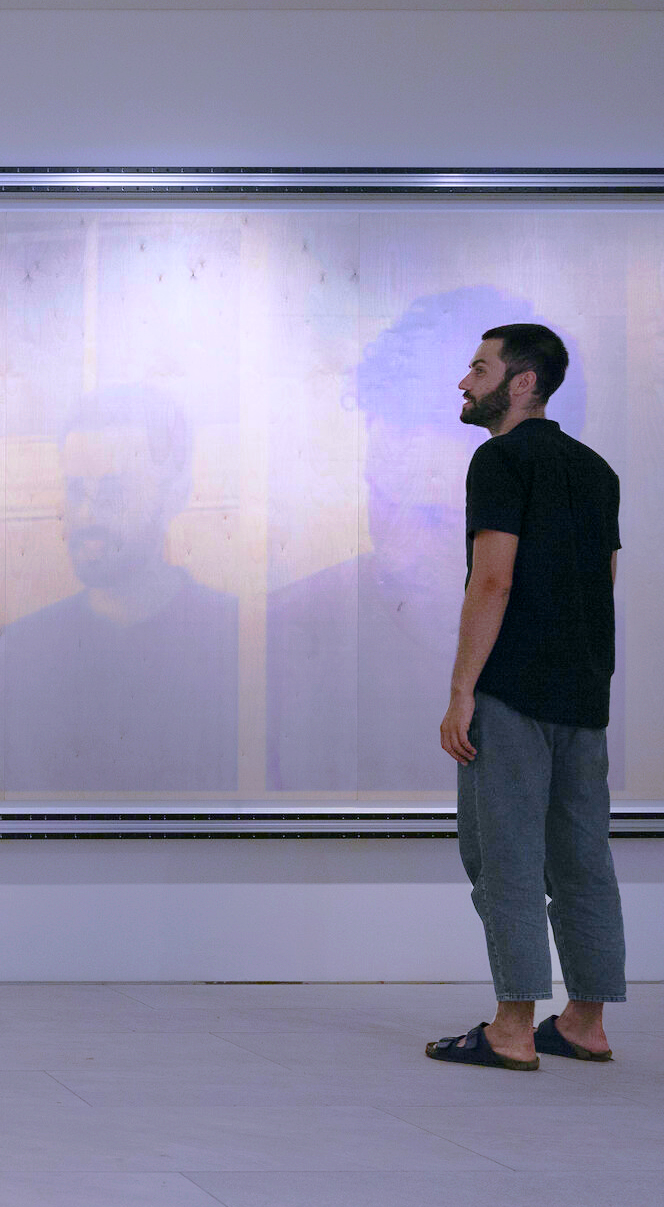
Random International
Presence and Erasure
Presence and Erasure is a portrait machine that explores the reality of automated facial recognition and how people relate to their self-image, instinctively and emotionally. Within a given spatial domain, the artwork constantly scans for faces in the vicinity and photographs them. When the artwork’s algorithm detects a certain quality within a photograph, this image is temporarily printed at large scale by exposing a photochromic surface to light impulses. Each automated portrait remains for little more than a minute, before gradually dissolving into blankness. RANDOM INTERNATIONAL began to combine transient mark-making with automated portraiture early on in their practice, in 2008. Presence and Erasure marks the latest development in this body of work and assumes a minimal, industrial aesthetic that references their earliest studies on this theme. The physical impact of facial recognition and machine vision is emphasised by the exposure of the printing process itself, contrasted against the aesthetic of the high resolution portraits generated. RANDOM INTERNATIONAL intend this as a counter to the perception of surveillance footage as always being low quality, aiming to create a deeper reflection on the nature of surveillance today as well as the resounding cognitive and emotional dissonances.

Klaus Obermaier
Face IT
The interactive installation FACE IT displays and exposes local people in a communicative setting where they are able to interact with faces of themselves or of other participants and at the same time become creative players and the stars of the artwork. This interactive situation not only creates a strong interplay between facial expressions and body movements, it also enhances these expressions and in the very best moments it creates a unique nonverbal language.
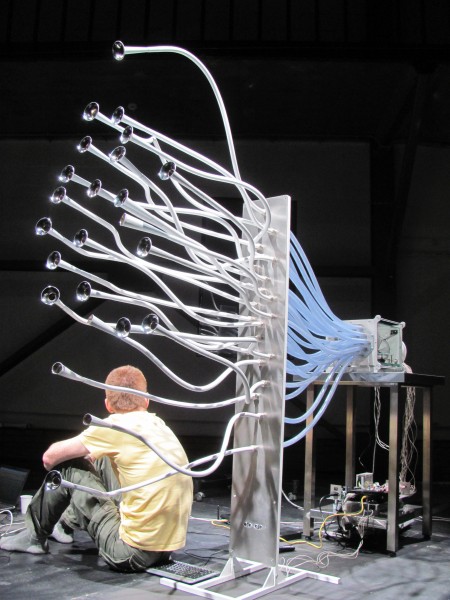
Where Dogs Run
Smell of faces
This unique, ever-changing pattern is visualized in a facial composite. This is how it works: when a person approaches the analyzer, sniffing tubes “sniff” him, then gas analyzers process the information, which then passes to a computer program that translate air composition data into data concerning the shape and position of facial features (the components of a facial composite). As a result, a person sees a face of their smell that is conditional, in no way related to their actual physical appearance.
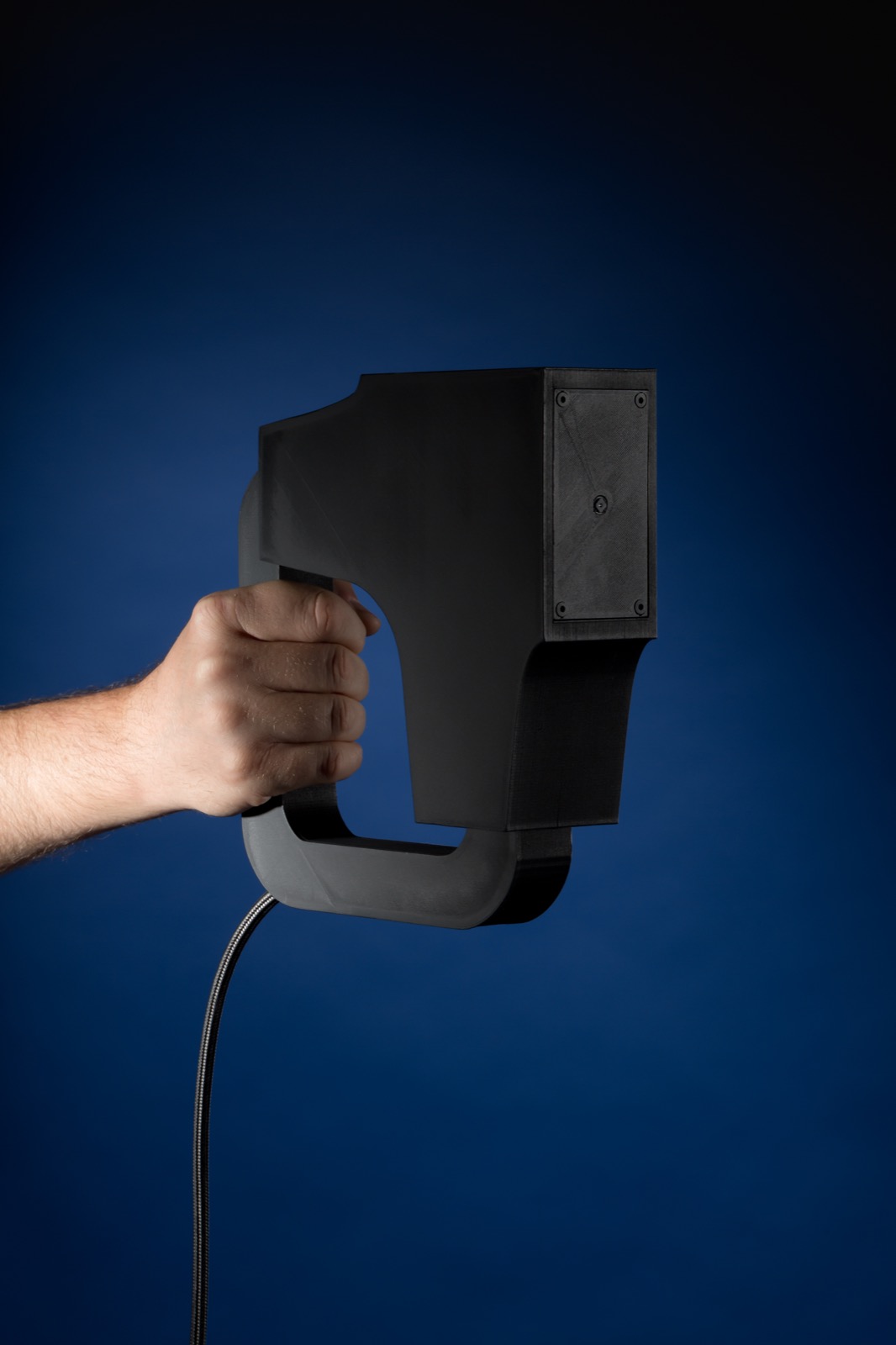
Marta Revuelta
AI Facial Profiling, Levels of Paranoia
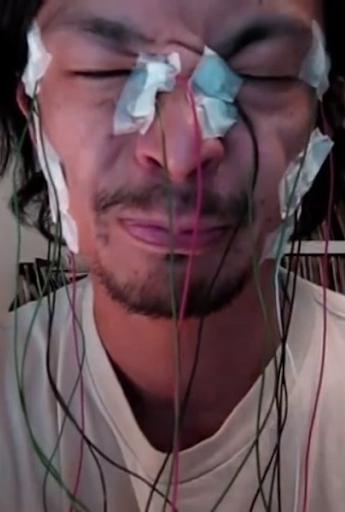
DAITO MANABE
真鍋 大 度
One of the new technology projects from the programmer and artist Daito Manabe based in Tokyo, Japan, centres on experimental music performances and connects a person’s face to electric sensors. This innovative system lets you ‘play’ your face like a musical instrument with the help of facial movements that trigger sounds. Electrical stimulation makes a face twitch involuntary, each twitch matches the beat of the music.
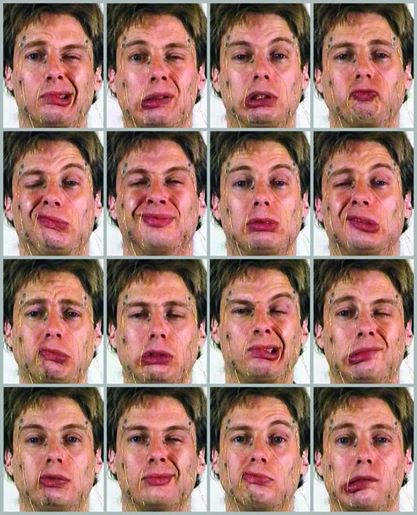
ARTHUR ELSENAAR
The Varieties of Human Facial Expression
12 bit version
“The Varieties” is an algorithmic exploration of human facial expression. Six muscles on each side of the face are triggered in succession by means of electrical stimulation, resulting in 4096 different facial expressions.

bernd hopfengaertner
BELIEF SYSTEMS
Facial micro expressions last less than a second and are almost impossible to control. They are hard wired to the emotional activity in the brain which can be easily captured using specially developed technological devices. Free will is now in question as the science exposes decision-making as an emotional process rather than a rational one. This ability to read emotions technologically result in a society obsessed with their emotional reactions. Emotions, convictions and beliefs which usually remain hidden, now become a public matter. “Belief systems” is a video scenario about a society that responds to the challenges of modern neuroscience by embracing these technological possibilities to read, evaluate and alter peoples behaviours and emotions.

hanson robotics
Sophia the robot
Sofia, le robot humanoïde (android) ultra-réaliste fabriqué par Hanson Robotics, devient le premier robot a obtenir une citoyenneté officielle ! C’est l’Arabie Saoudite qui a officialisé il y a quelques jours l’existence de Sofia, devenant le premier pays à reconnaitre le statut de citoyen d’un robot et d’une intelligence artificielle. Sofia, dont nous avions déjà parlé l’année dernière, est un robot ultra-réaliste capable de tenir une conversation, de reconnaitre les gens et d’interagir avec son environnement, mais surtout possède sa propre personnalité et des expressions faciales réalistes.
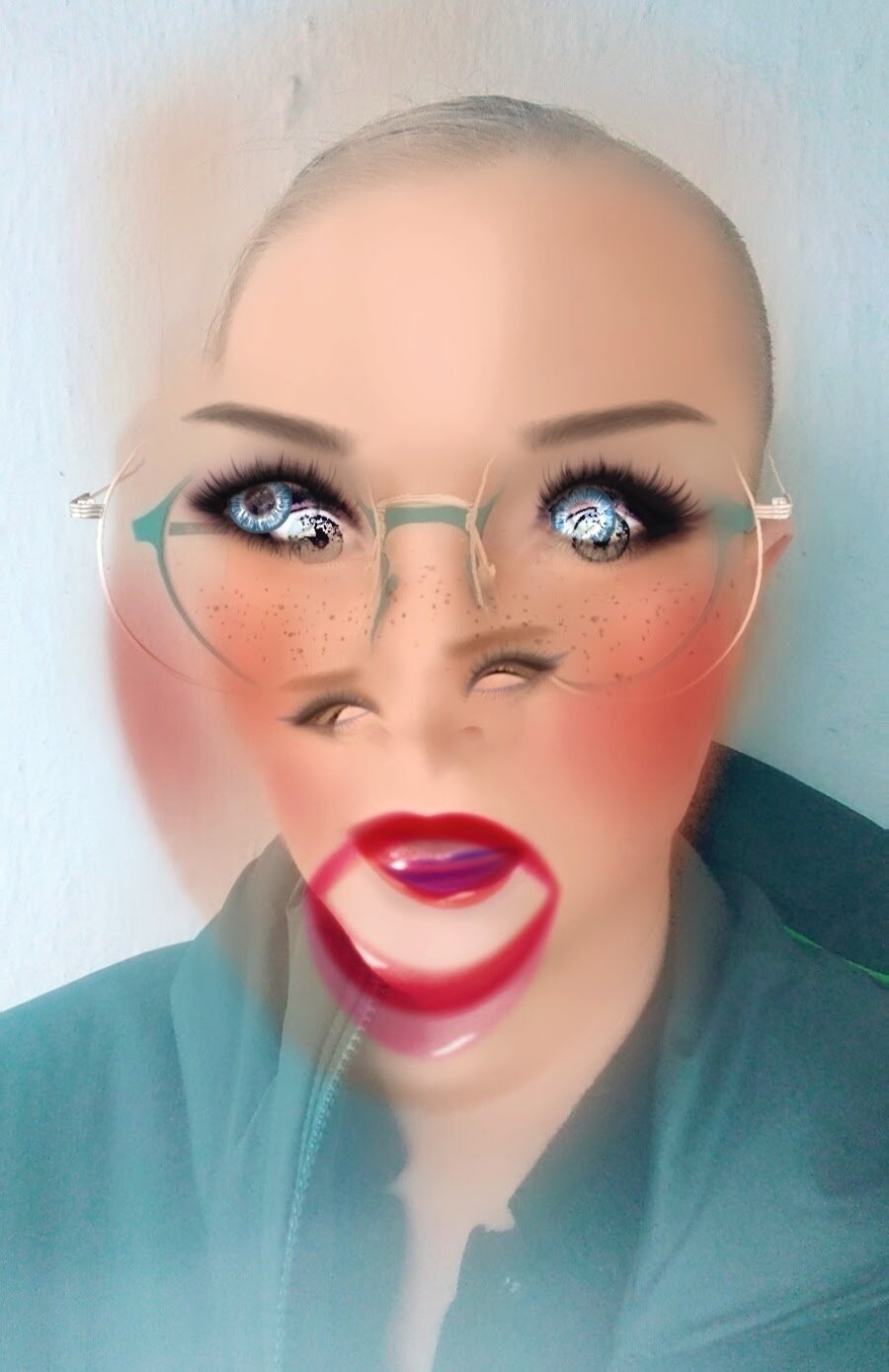
M. Eifler
The Masking Machine
Using a custom wearable computer I can walk around any space wearing the still images now animated by my facial expressions. When seen through the screen hovering in front of my face I wear the images like an avatar, but unlike with the stills on a wall or images online I can reach out from behind the screen to shake hands and talk with viewers.

KLAUS WEBER
كلاوس ويبر
克劳斯·韦伯
클라우스 베버
Клаус Вебер
32 death masks
32 death masks grew out of Weber’s fascination with a practice traditionally performed in Western societies, whereby facial impressions of recently deceased persons are made in plaster. Prior to the invention of photography, the act of producing casts or “masks” from these molds was undoubtedly the most accurate way of preserving a particular person’s visage for viewing long after their death.